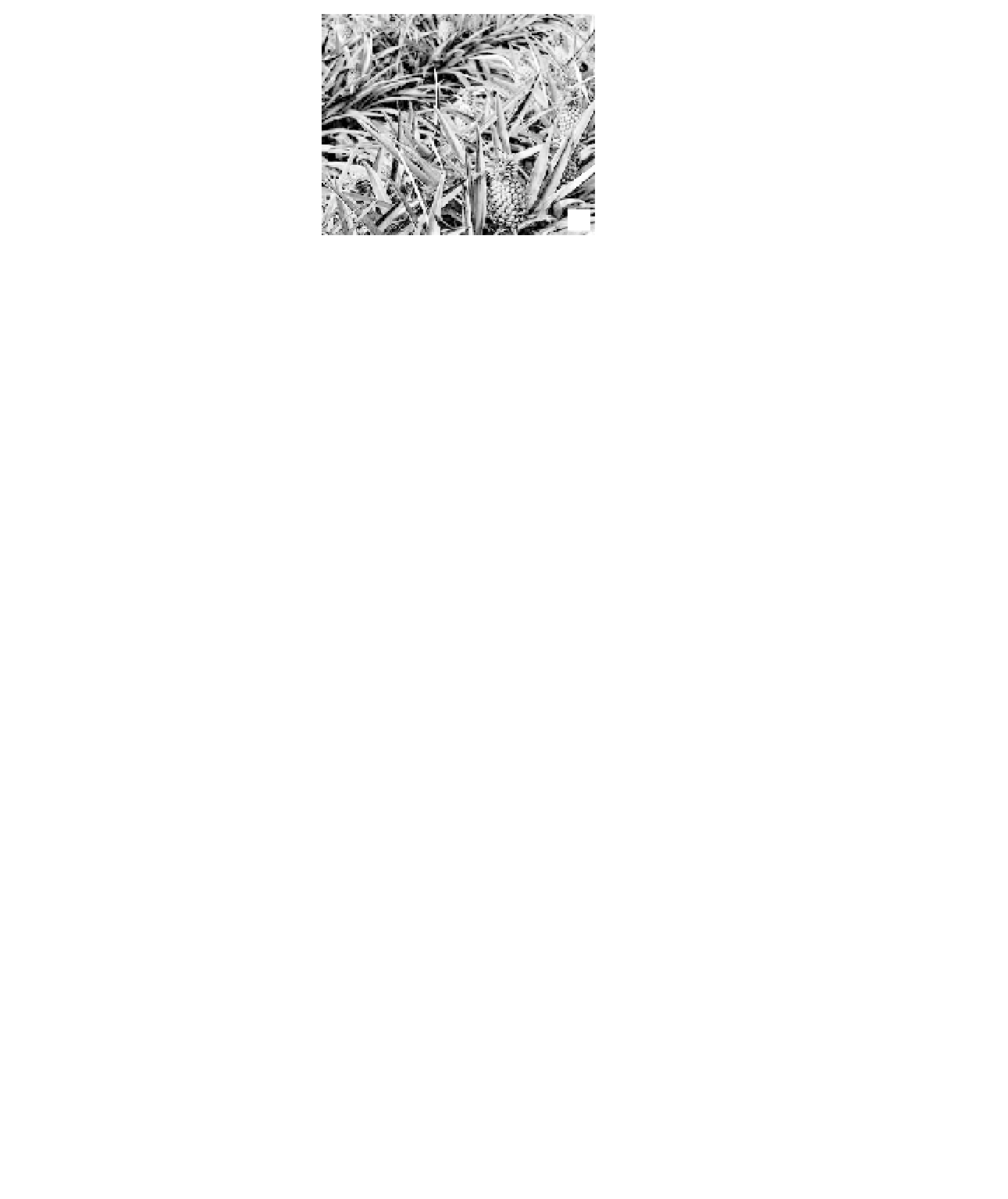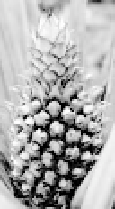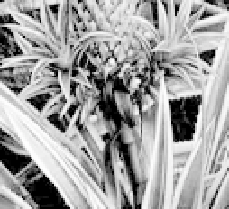Agriculture Reference
In-Depth Information
Crown
Fruit
(D)
(A)
Slips
Leaves
Skin
Core
Ovaries
Peduncle
(B)
(C)
(E)
Figure 18.2.
Pineapple planted on double rows in a large plantation (A); flower and fruit development
(B, C, D); transversal cut of the fruit (E). For color detail, please see color plate section.
dependent on the required storage life and the method of
transportation to the markets. Since fully ripe yellow fruit
is susceptible to a higher degree of damage during long-
distance shipping, slightly less mature fruit is selected for
distant markets. The fruit is twisted from the stalk, placed
with the crown down in a sack or basket, and carried to
the end of the row to be picked up in shaded conditions.
In large-scale production, pickers walk behind a conveyor
belt mounted on a truck chassis that moves slowly across
the field. Fruit picked by hand are placed on the belt and
transferred to a bin or a truck gondola or are field packed
(Paull and Chen, 2003).
and shell color, are finally placed in telescoping fiberboard
carton (10 or 20 kg). The cartons are palletized and re-
frigerated (forced air or room cooling) to 8
◦
-10
◦
Cand
loaded into aircraft or shipping containers for shipping to
the wholesaler (Paull and Chen, 2003). The recommended
storage conditions are 7
◦
-12
◦
C and 70-95% relativity hu-
midity (14-20 days) when the fruit is at the color break
stage, and 7.2
◦
C (7-10 days) for ripe fruit (Paull, 1993,
1997). At a temperature of 0
◦
-4
◦
C, the fruit may be stored
for weeks, but on removal, the fruit fails to continue ripen-
ing and shows severe chilling injury (CI).
POSTHARVEST LOSSES: CAUSES
AND REMEDIES
Postharvest handling and storage
Once at the packing shed, fruit may be unloaded by hand,
by submerging the field bin in water or by allowing the
fruit to slide out of the field bin into water. Fruits that are
undersize, oversize, overripe, underripe (depending on the
market requirements), damaged, bruised, or show fungal or
insect damage or high translucency (“sinkers”) are culled.
The water in the dump tank needs to be chlorinated and
replaced frequently to prevent disease organism prolifera-
tion and fruit cross-contamination. The stems (peduncle)
should be trimmed to 2 cm. The inside of the crown is
sometimes gouged out to reduce its size to about 10 cm to
maintain a balance between fruit and crown size. Pineap-
ples are treated with fungicides with a dip or spray applica-
tion to control postharvest fruit rot. Fruit, sorted by weight
Physiological disorders
Chilling injury
Exposure of pineapples to preharvest shading and pre- and
postharvest low temperatures (below 7
◦
C) results in CI.
Ripe fruit are less susceptible than unripe or partially-ripe
fruit. Symptoms include dull green color when ripen (fail-
ure to ripen properly), water-soaked flesh, darkening of the
core tissue, increased susceptibility to decay, and wilting
and discoloration of crown leaves (Teisson and Combres,
1979). CI symptoms normally develop after the fruit is re-
turned to temperatures between 15
◦
and 30
◦
C. Susceptible
fruit are generally lower in ascorbic acid and sugars and
are opaque (Paull and Chen, 2003). Abdullah et al. (2008)















Search WWH ::

Custom Search